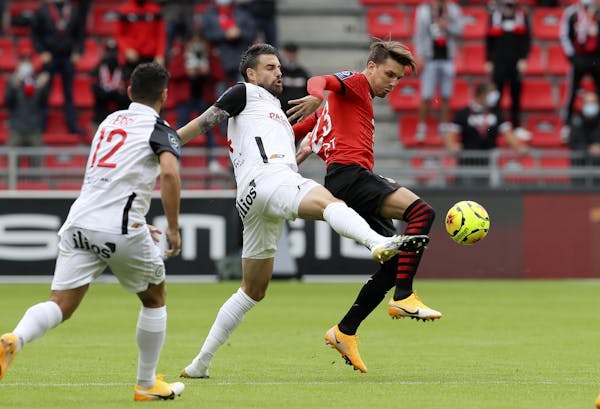Delayed by a global pandemic and a change in direction, Minnesota United's intended bridge from the state's youth leagues to the pro club's first team is a work in progress five days a week, from early January until mid-March.
When those 10 weeks end, more than 700 prospects ages 8 to 19 will have been assessed at the team's Blaine training facility. More than 100 of them in U-19, U-17 and U-15 age groups will be selected to join MLS Next sometime this spring or early summer.
The successor to U.S. Soccer's shuttered elite-player development academy, MLS Next is Major League Soccer's new system of youth leagues started last fall. It is expected to include 113 clubs, 489 teams and 9,000-plus players across the United States and Canada.
When the team announced the new Youth Development Program last August, Loons chief soccer officer Manny Lagos called it an attempt to "cast a wider net" for potential pro players across Minnesota.
New director of youth development Noel Quinn, a longtime Minnesota high-school coach from Northern Ireland, said the club's new elongated "discovery" search has engaged more than 25 youth clubs in the metro area and outstate. Youth coaches recommended players to train twice a week for 10 weeks in the new program. It's also drawn players from Duluth, Rochester, Austin and East Grand Forks.
On weekends, a new four-man coaching staff led by Quinn scouts different ethnic leagues, in which an estimated 15,000 players of Hispanic, African and Asian or Hmong descent compete. Last weekend, they scouted Latino players at Soccer Blast in Burnsville.
There's also a walk-on program in which players nominate themselves. The search began in early January after COVID-19 restrictions shut down an intended November start.
Quinn coached high-school soccer at Columbia Heights, Simley, Eden Prairie and led St. Thomas Academy to a state title in 2016. He said the new development program, being geographically distant from other MLS markets, must create a "cauldron" of competition among the region's best players before it ventures afar to play other academy clubs in Chicago and beyond.
"I've always believed the players are here," Quinn said. "The players that have come in the door are very talented, but they also need a lot of dedicated and purposeful work to push them toward becoming professional football players. We need to create an environment for elite development that is totally geared toward producing first-team players.
"Until we are able to maximize the potential in this market, we'll always have the feeling that we're maybe missing out on players."
The Loons' new Youth Development Program picks up where its youth academy, which ended last summer after U.S. Soccer's system did the same, left off.
Its academy produced one signed "homegrown'' player – goalkeeper Fred Emmings, signed in January 2020 at age 15 – before the club shut down operations, citing the pandemic financial implications. The coaching staff was released and as many as 17 of 80-some academy players uprooted themselves and in some cases their families to join MLS team academies elsewhere or the Shattuck-St. Mary's elite program in Faribault, Minn.
Their youth-development reimagining wasn't far enough along to convince Medina's own Caden Clark to play for his home-state team. Loons coach Adrian Heath said his club's lack of a reserve second team was one reason it sold Clark's rights to New York Red Bulls in October. At age 17, the midfielder who's aimed at a career in Europe became the youngest player in league history to score a goal in each of his first two MLS games.
Minnesota United's new program's purpose is train young players and develop them, all the way to a pro U-23 reserve second team and for a few to reach Minnesota United's first team.
Heath has said he expects his club will have a second team competing in the USL when the pandemic passes. He said it wouldn't have been right to add the expense of such a project given all of the pandemic's financial implications.
Teams such as Dallas FC, Philadelphia, Seattle and Real Salt Lake have invested heavily in their youth academies and been rewarded. The Loons have developed young players such as Hassani Dotson, Chase Gasper and Dayne St. Clair through the college SuperDraft. They traded up last month to draft Wake Forest striker Justin McMaster 17th overall and California-Davis defender Nabi Kibunguchy 18th overall.
"Young players coming in with fresh faces is very important," Quinn said. "The Dotsons, the goalkeeper St. Clair, they played massive roles last year. Young players coming into your squad give energy and a freshness to your group. Young players, they're always are going to be very important. Our job is to find those players and develop them."

Will this be the year legislators abolish "shotgun only'' for deer across southern Minnesota?

Expect another year of roster troubles from the Wild. Here's why.
Fernando Tatis Jr. has 50 custom cleats planned this year, including odes to Gwynn, Curry and more

Meet the Athena Award winners: 103 female athletes honored by their schools

